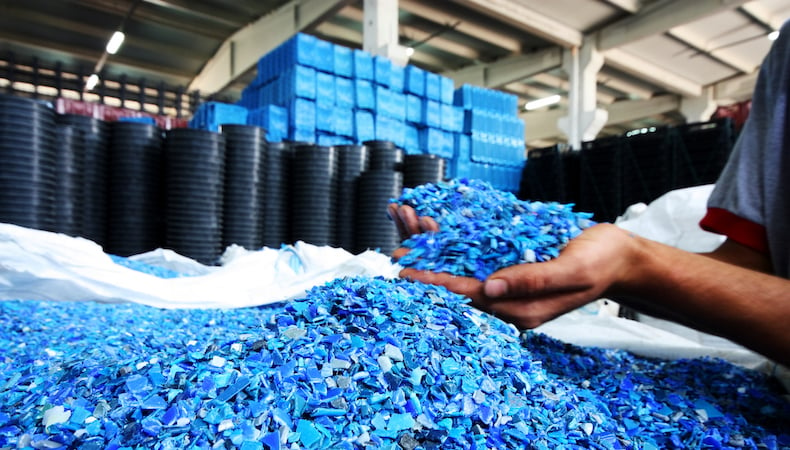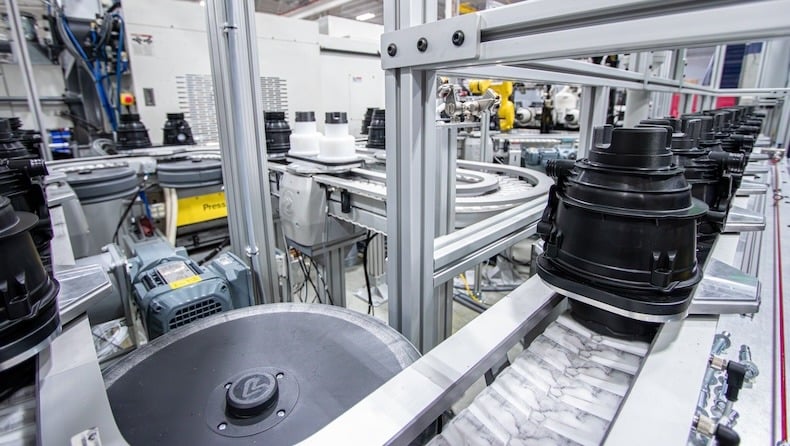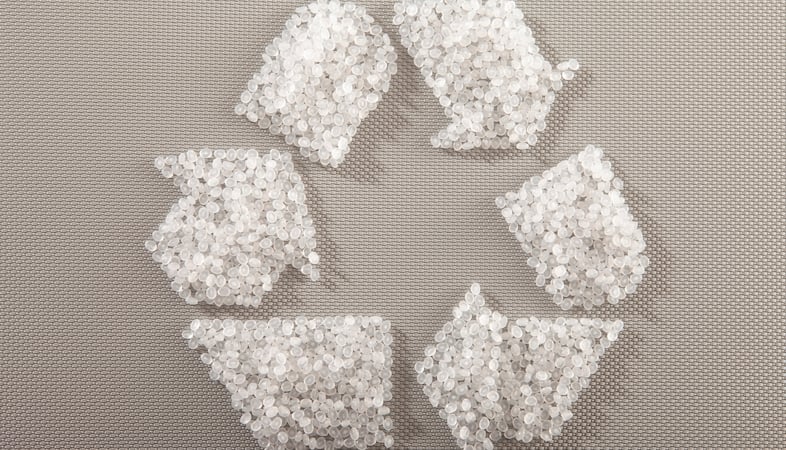Injection molding process

Sustainability is an increasingly urgent concern for businesses.
On one hand, consumers, industries, and governments demand greater transparency into brands’ environmental, social, and economic impacts. On the other, companies’ own future viabilities depends on the long-term sustainability of their business strategies.
Conversations around sustainability have jumped the tracks from nice-to-have to must-have. And plastic injection molding, as an integral part of so many manufacturing processes, is part of the conversation.
As an in-demand manufacturing process that also continues to advance, injection molding is positioned to have a deep and meaningful impact on sustainability for products everywhere.
Innovations in materials, design disciplines, manufacturing processes, and data capture, analysis, and reporting all support a more sustainable future for injection molding. That’s good news for manufacturers that rely on injection molding — and for a more sustainable future.
As for those companies that won’t be swayed by ethics or economics, they’ll soon enough be motivated by regulatory standards including the European Union’s (EU’s) forthcoming sustainability standards.
No matter the motivations, now is the moment for manufacturers to rethink injection molding processes, materials, and end products, to ensure they align with core sustainability values.
Sustainability becomes easy to embrace as a core business value when understood in its simplest expression, applied to environmental, economic, and social ethics:
Sustainability is about meeting today’s needs without compromising the future.
Increasing environmental and social concerns are the primary drivers of European Union (EU) sustainability reporting standards. The EU aims to have a full suite of standards ready to enforce in 2024, with a goal of climate-neutral economies by 2050.
Companies will need to gather and disclose extensive data on sustainability-related impacts across their value chains. This will require tracking and reporting on factors like greenhouse gas emissions, resource consumption, chemical usage, waste production and handling, water usage, energy efficiency, and more.
Once in full force, the EU standards require companies in every industry to take a hard look at their processes through a sustainability lens. OEMs and injection molders can begin today by evaluating practices and processes with a focus on core sustainability values, and making adjustments to implement sustainability in practice.
Design for Manufacturing (DfM), with its goals of reductions in waste, costs, and time, as well as optimal quality, aligns significantly with the core values that drive sustainable design.
But while DfM focuses on these narrower factors, sustainable design is more broad and holistic, considering environmental, economic, and social impacts across the full product lifecycle from sourcing raw materials to final disposition as waste. The goal of sustainable design is to minimize negative ecological and ethical impacts at every stage.
Processes optimized to meet DfM goals are likely to generate sustainability benefits, such as reductions in:
And many DfM guidelines align with core sustainability principles, including:
The points of intersection between DfM and sustainable design include goals of maximum efficiency, process and product safety, and environmental responsibility. DfM represents a robust toolkit, while sustainable design supplies the core values and ethical considerations, such as:
A key consideration for sustainable injection molding is choosing eco-friendlier and non-toxic source materials. Designers and manufacturers now have a growing list of more sustainable material alternatives:
Poly(diketoenamine), or PDK, is another material of interest, as it can be produced from biological sources or scrap plastics, and can be recycled and reprocessed multiple times without material degradation. It’s resistant to high heat, has similar mechanical properties to PET and/or HDPE, and under the right conditions, PDK can be biodegradable and compostable.
The materials selected should aim to minimize carbon footprint, energy usage, and waste while meeting technical product requirements, and while allowing for recyclability or biodegradation at end of life.
When it comes to highly specialized injection molded parts, today’s product designers are likely to find themselves threading a needle between performance and sustainability values. But in the meantime, while material innovation continues, there’s great potential for driving sustainability improvements in manufacturing processes. A great place to start is by partnering with an injection molder that supports sustainable processes.
Beyond material selection, manufacturers can design an ecologically-minded injection molding process:
Improving the sustainability of injection molding processes is a complex challenge but one that manufacturers must embrace.
Following the strategies above focused on sustainable materials, energy efficiency, waste reduction, recycled content, and closed loop systems will help position manufacturers to thrive, not only under the EU’s upcoming sustainability reporting requirements, but as integral assets to, and members of, the communities they call home.
Sustainability’s not the only trending influence on injection molding, but if you look closely you’ll see it at the root and in the details of the biggest trends in the industry right now. Recyclability, reshoring, automation, and even the recent global resin shortage all tie back to the increased urgency for more ecological and ethical manufacturing.
As manufacturers adapt processes — from material sourcing to facilities to end-of-life product disposition — this paradigm shift will continue to surface new challenges. But it may also create new opportunities for injection molding to leverage innovation and technology, and become a greener, cleaner part of the manufacturing process. Ultimately, sustainability is not merely a trend but a new standard that promises to shape the industry for decades to come.
Injection molders and OEMs that want to be proactive about their sustainability journey can benefit from resources offered by federal agencies, nonprofit organizations, and educational institutions, as well as innovative technologies being advanced by industry leaders.
Conferences and trade exhibits like Molding 2023 offer opportunities to stay up to date on best practices, regulatory developments, and product innovations. Plastics Technology’s published articles are searchable by hashtag, and #Sustainability offers a trove of updates. Within its Materials section, subsections cover recycled materials and biopolymers.
Preparing for the changes ahead will require granular awareness of supply chains. Manufacturers will need transparency and visibility into supplier networks, vulnerabilities, risks, and alternatives to their weakest supply chain links. Learn how mapping your supply chain can help your organization face the challenges ahead while supporting excellent manufacturing outcomes.


Industry 4.0 has made manufacturing more dynamic than ever before. Merging IoT, AI…
READ MORE

Injection-molded parts and products are staples for OEMs in industries ranging fro…
READ MORE

Injection molding is a versatile and precise process, making it ideal for OEMs tha…
READ MORE